Understanding Fire Fighting Sprinkler Systems: How They Work and Why They’re Essential
As a facility manager or fire safety officer, one of your top priorities is ensuring the safety of occupants in the buildings you oversee. Fire sprinkler systems play a critical role in achieving this goal, but do you truly understand how they work and why they’re so essential? Let’s break it down.
An automatic fire sprinkler system is designed to detect and respond to a fire emergency automatically. It consists of several key components working together seamlessly:
1) Water Supply: This could be a storage tank, pump, or connection to the municipal water main, ensuring a constant supply of water.
2) Piping Network: A series of pipes distribute water throughout the building, with sprinkler heads installed along the pipe lengths.
3) Sprinkler Heads: These are the most recognizable part – they’re essentially heat-activated valves that open to spray water when temperatures rise rapidly due to fire.
4) Alarm System: Most sprinkler systems connect to alarms that alert occupants and fire departments when activated.
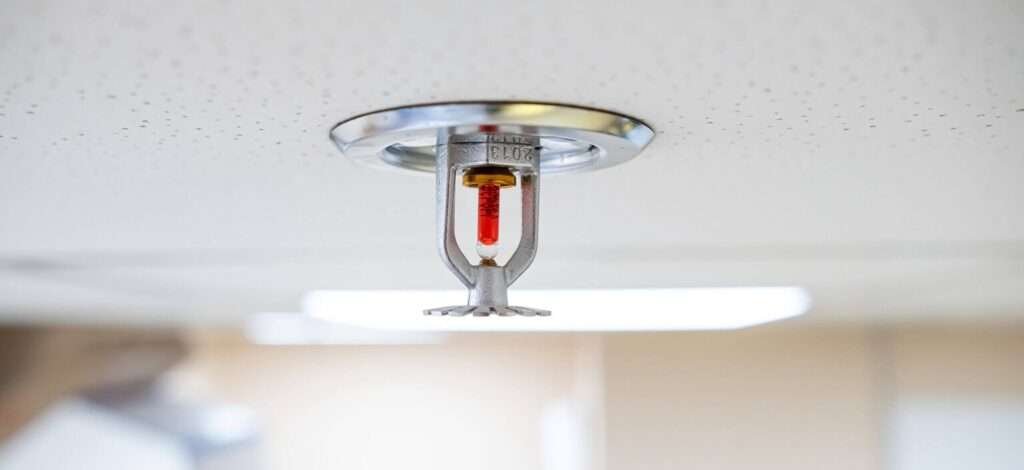
The genius is in the design – sprinkler systems are engineered based on the specific layout and usage of each building space. Pipes are carefully mapped out, and sprinkler heads are positioned and spaced according to fire risk calculations.
There are different types suited for various environments, from basic wet pipe systems for general occupied areas to specialized dry and preaction systems designed for environments where accidental sprinkler discharge could be catastrophic, like computer rooms or museums.
When a fire breaks out, the intense heat causes the sprinkler head(s) nearest the fire to activate individually, flowing water directly onto the flames. This immediate response can control or extinguish many fires before they have a chance to grow and spread uncontrollably.
Properly designed, installed, and maintained fire sprinkler systems are incredibly effective – statistics show that sprinklers control over 96% of fires in which they operate. They not only protect lives but also limit property damage and business downtime compared to fires where sprinklers were absent.
Choosing the Right Sprinkler System for Your Building: Factors to Consider
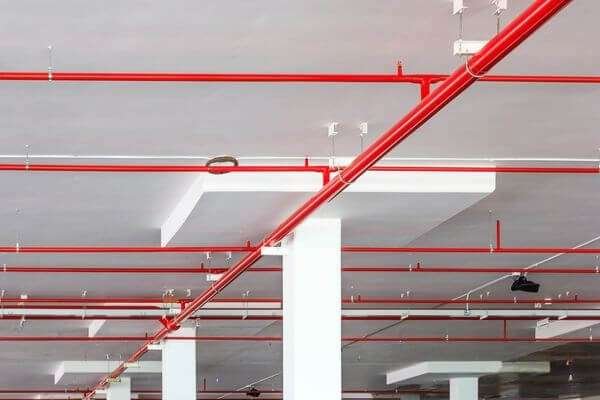
Installing a fire sprinkler system is one of the most effective ways to safeguard your building and its occupants from fire dangers. However, not all sprinkler systems are created equal – selecting the right type is crucial for ensuring it functions as intended while meeting all code requirements. As a facility manager or fire safety officer, here are some key factors to consider:
Building Use and Occupancy
Different sprinkler systems are required based on the purpose and occupancy of a structure. For example, residential sprinklers have different flow rates and spacing than systems designed for commercial or industrial buildings. The hazards and combustible materials present also play a role.
Construction Type
The building construction type impacts sprinkler requirements too. Concrete or fire-rated assemblies allow greater spacing between sprinklers than wood or unprotected steel construction. Coverage areas must be calculated accordingly.
Water Supply
Is there adequate municipal water pressure and flow available year-round? If not, a fire pump and water storage tank may be needed to supplement the system’s water demands during operation.
Cost Factors
Sprinkler systems aren’t a small investment. Costs vary based on the extent of piping, sprinkler types, water supply requirements, and monitoring systems needed. However, the potential property damage and life safety implications make sprinklers a wise long-term investment.
Code and Insurance Considerations
Most jurisdictions legally require sprinklers in new construction over a certain size as well as some existing buildings if renovated. Many insurance providers offer policy credits for sprinklered buildings too.
During the design phase, experienced fire protection engineers conduct detailed hydraulic calculations customized to the facility to determine the most appropriate, code-compliant sprinkler system layout.
Installation Practicalities
Factors like ceiling configurations, obstructions, future renovations, and aesthetics can influence sprinkler positioning. Concealed, recessed, or specialized sprinkler types provide design flexibility.
Maintenance and Monitoring
All sprinkler systems require robust inspection, testing and maintenance programs by qualified personnel to ensure reliable performance. Monitoring systems are also crucial for promptly transmitting sprinkler activations.
By carefully evaluating your building’s characteristics and consulting fire protection experts, you can select a sprinkler system providing the required life safety and property protection in a code-compliant, cost-effective manner. The right system helps minimize fire risks while providing peace of mind.
Step-by-Step Guide to Installing a Fire-Fighting Sprinkler System
Here’s a concise step-by-step guide to installing a fire sprinkler system:
Step 1: Planning and Design
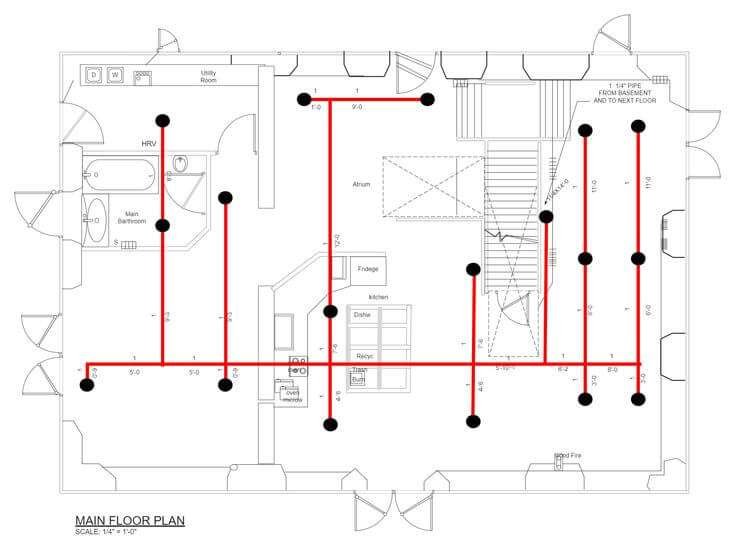
Assess building layout, occupancy, hazards to determine appropriate sprinkler system type
Hire qualified fire protection engineer to design code-compliant system
Engineer calculates pipe sizing, sprinkler positioning/spacing based on hydraulic calculations
Step 2: Pipe Installation
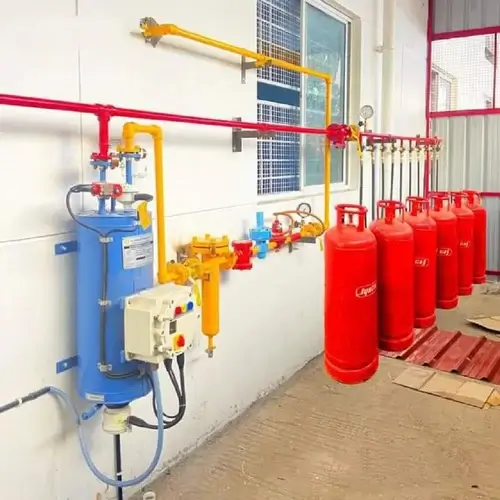
Install network of supply and distribution piping per approved design
Use proper materials, joining methods, hangers/supports
Account for obstructions, future renovations
Step 3: Sprinkler Head Placement

Mount sprinkler heads at specified locations and spacing
Ensure proper coverage, considering ceiling configurations
Use appropriate temperature ratings for each area
Step 4: Water Supply Connection

Connect system to adequate municipal water supply
If needed, install fire pump and water storage tank
Step 5: Inspection and Testing
Hydrostatically test piping for leaks before concealing
Perform flow and tamper switch tests
Verify signals transmit properly to monitoring station
Step 6: Final Approval
Local fire marshal/AHJ inspects and approves installation
Acquire permit/documentation for occupancy
Step 7: Inspection/Maintenance
Implement periodic inspection, testing, maintenance program
Promptly repair deficiencies to keep system operational
Adhering to proper installation procedures by qualified contractors helps ensure fire sprinkler systems function reliably when needed.
Here is a more concise version:
Maintaining and Inspecting Your Fire Sprinkler System

Having a fire sprinkler system is crucial, but it requires proper maintenance and inspection to ensure reliable performance:
Routine Maintenance
Annual inspections by qualified personnel
Check water supply, alarms, control valves
Inspect pipes, hangers, sprinkler clearances
Five-Year Inspections
More in-depth internal pipe inspections
Test and replace sprinkler heads if needed
Prompt Repairs
Fix any deficiencies like leaks promptly
Replace worn components
System Replacements
Replace if extensively corroded/damaged
Or for renovations/occupancy changes requiring redesign
Implement a proactive inspection/maintenance program managed by experienced contractors. Preventative measures ensure sprinklers can control fires when needed.
The Proven Benefits of Having a Fire Sprinkler System
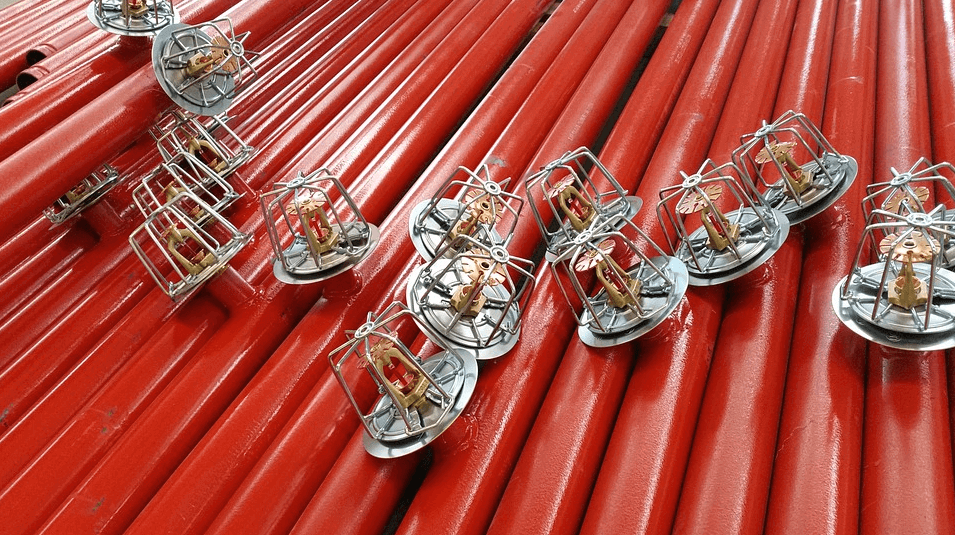
As a facility manager or fire safety officer, you understand that fires pose a major threat to buildings and their occupants. While implementing robust fire prevention and evacuation plans is crucial, installing an automatic fire sprinkler system provides proven life-saving advantages that simply can’t be matched. Here are some of the key benefits:
Enhanced Safety
Sprinklers react quickly to control or extinguish fires while they are still small and contained. This buys critical time for occupants to evacuate safely and prevents fires from growing into uncontrollable infernos. Sprinklers reduce civilian fire deaths by about 80% in residential properties and are even more effective in other buildings.
Property Protection
Not only do sprinklers save lives, but they also limit property damage and business downtime from fires. Sprinklered fires cause on average 60% less damage compared to fires where no system was present. This prevents total losses and expensive repairs/rebuilding.
Lower Insurance Costs
Insurance providers understand and incentivize the immense fire risks sprinklers mitigate. That’s why they offer policy credits potentially reducing premiums by over 25% for sprinklered commercial and residential properties. The sprinkler investment can pay for itself through these savings over time.
Code Compliance
Most modern building and fire codes mandate sprinklers be installed in new construction over a certain size as well as many renovation projects of existing buildings. Having sprinklers allows facilities to meet these legal life safety requirements.
Operational Benefits
Beyond fire, sprinklers also activate to control indoor hazmat spills and decontaminate areas hit by terrorist chemical/biological agents. Their highly versatile protection capabilities benefit numerous industries.
Despite their robust life-saving reputation, concerns about water damage are unfounded – sprinkler piping is designed for the minimum water required to control a fire at its source, minimizing unneeded water flows.
By providing an prompt, effective source of fire control integrated throughout a facility, automatic fire sprinkler systems prove their value time and time again through enhancing safety while preventing catastrophic losses.
As a facility manager or fire safety officer, your top priority is safeguarding the people and property in the buildings you oversee. While fire prevention plans and evacuation procedures are essential, installing an automatic fire sprinkler system provides a proven, reliable solution for quickly controlling and suppressing fires before they can grow out of control.
The benefits of sprinklers are indisputable – they vastly improve life safety by allowing occupants time to evacuate, reduce property damage and business downtime from fires, and can even lower insurance costs over time. Many jurisdictions now mandate sprinklers be installed in new construction and renovated buildings to enhance fire protection.








4 thoughts on “The Ultimate Guide to Fire Fighting Sprinkler Systems: Installation, Maintenance, and Benefits”
Pingback: Massive Fire Breaks Out in Noida Sector 100 - AC Blast Sparks Fire Safety Concerns - Basic Elements
Pingback: Mastering Fire Hydrant Systems: A Comprehensive Guide for Fire Safety Officers - Basic Elements
Pingback: Mastering Addressable Fire Alarm Systems: A Comprehensive Guide to Fire Alarm Panels, Annunciators, and Control - Basic Elements
Pingback: Fire Sprinkler Pipe: Revolutionize Your Protection System
Comments are closed.